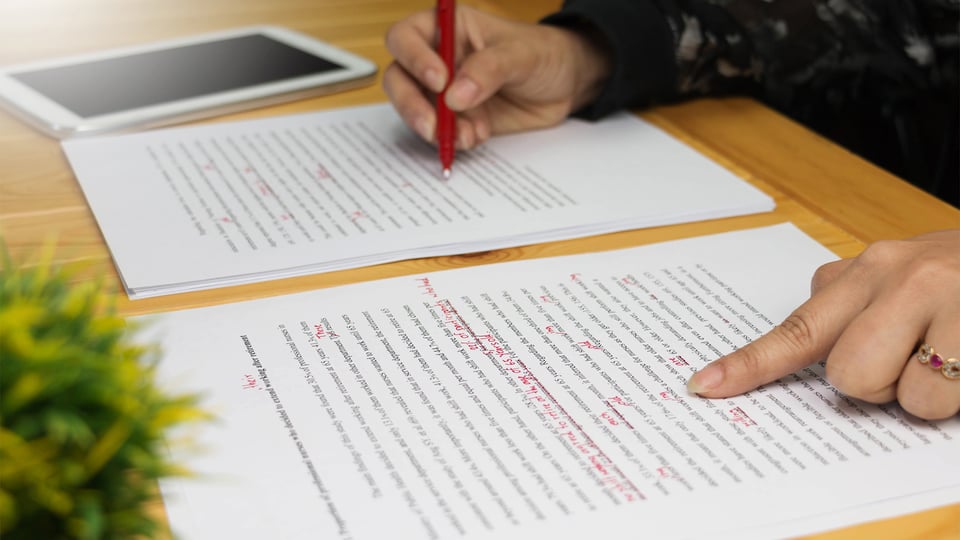
At school, you were given lots of marks for varying your writing style and avoiding repetition. But when writing technical documentation, and particularly when translating it, using different words and phrases can lead to big problems and higher translation costs. This post explains how making your texts suitable for translation can save you time, money and stress.
What does “suitable for translation” mean?
Everyone wants to avoid problems when translating technical texts or documentation, but they keep happening. Convoluted sentences, endless lists, phrasal verbs and other issues make life very difficult for translators and translation systems, which can quickly lead to genuine mistakes in the translation with serious financial consequences.
So what can you do as a technical writer to help the translation process go smoothly? The answer is to think ahead to the translation when writing your texts. Or in other words, to make the texts suitable for translation. Above all, that means making your texts easy to understand: a source text that’s straightforward and well-written will cause fewer problems during the translation. But what exactly does “easy to understand” mean?
“A sentence is easy to understand if it can be read out to a person, and that person can then repeat it word for word.”
That’s the rule of thumb used by Martin Holzmann, founding partner of ARAKANGA GmbH. ARAKANGA has many years of experience in helping manufacturers produce technical documentation, so Holzmann knows what matters most in order to make texts suitable for translation: no matter what language, they must first and foremost be clear and easy to understand.
If our short-term memory can cope with a sentence, that’s a sign it’s easy to understand and suitable for translation.
How to write texts that are suitable for translation
In order to produce texts that are easy to understand, you need to plan ahead. The following three steps will be helpful:
Step 1: Preparation
There are some important factors to bear in mind before starting which form the basis for producing a straightforward, easy to understand text. Ask yourself these questions:
- Who is the target audience for my text, and how can I best speak to them?
- What is the purpose of the text, and which content do I want to convey?
Ideally, you would also write your source texts in a content management system as this can avoid complications later on. It will also help ensure a smooth translation process if you have basic knowledge of the translation memory system (TMS) that will be used to produce the translation.
Step 2: Content
Next, focus on the content itself. It’s important to keep the content to a minimum – unnecessary text simply adds to what you pay for the translation. So only include what’s absolutely necessary, and make sure it’s all correct. A text is only correct in terms of its content if it’s clear and gives the reader all the information they need to understand the subject matter.
Step 3: Structure
Next, organize the content so that it’s in a clear, logical order. Remember that images with captions can play a key role in helping readers understand your text.
1. Phrasing
- Use consistent terminology
- Use the active voice as much as possible
- Use standardized and introductory sentences
- Only use abbreviations if you’ve explained them previously
- Keep sentences short and simple
- Don’t use back references
2. Syntax
- Avoid convoluted sentences, try not to use phrasal verbs, and keep subjects and verbs close together
- Don’t overuse subordinate clauses (no more than one in a sentence)
- Follow “Question-Answer” patterns, i.e. write in small units
- Keep sentences as short as possible (12-15 words)
- Never break up a sentence with special formatting (e.g. bullet point lists, brackets or dashes) to ensure the message doesn’t get confused
- Introduce lists with complete sentences
Once you’re finished, translators should have access to the whole document in order to understand the context – if not, they might misunderstand certain parts of the text and produce inaccurate (or completely incorrect) translations.
What’s the benefit of texts that are suitable for translation?
These tips are guaranteed to make life easier for all the translators working on your texts. And that’s the first key benefit of making texts suitable for translation:
1. Save money
A text written with these tips in mind will save you money: making texts more consistent and using shorter sentences allows more segments (the blocks your text is divided into by the TMS) to be reused, which means you only pay for them to be translated once. And thinking ahead to the translation when writing your texts is just one of a number of ways to get better value for money from the translation process.
2. Minimize the risk of liability claims
Safety is another key benefit of producing technical documentation that’s suitable for translation: by contrast, a convoluted, unclear text can lead to inaccurate translations, which in turn lead to accidents and injuries at work.
When technical documentation describes how to use a product, incorrect information can lead to the product being used dangerously – and the consequences aren’t nice to think about. The worst-case scenario is accidents and injuries to users, and you as the manufacturer will be made liable.
Think ahead – for the translator, the manufacturer and the end user
Whether it’s saving lives, helping your employer avoid expensive liability claims, making life easier for translators or simply saving money, there are lots of reasons why it’s a good idea to make your source texts clear, easy to understand and suitable for translation. We’ve put together specific guidelines you can follow when writing your texts, including all our top tips for creating technical documentation that’s suitable for translation. Download our guide below!
Our thanks to Martin Holzmann at ARAKANGA GmbH for his expert help and support on the subject of making texts suitable for translation.


